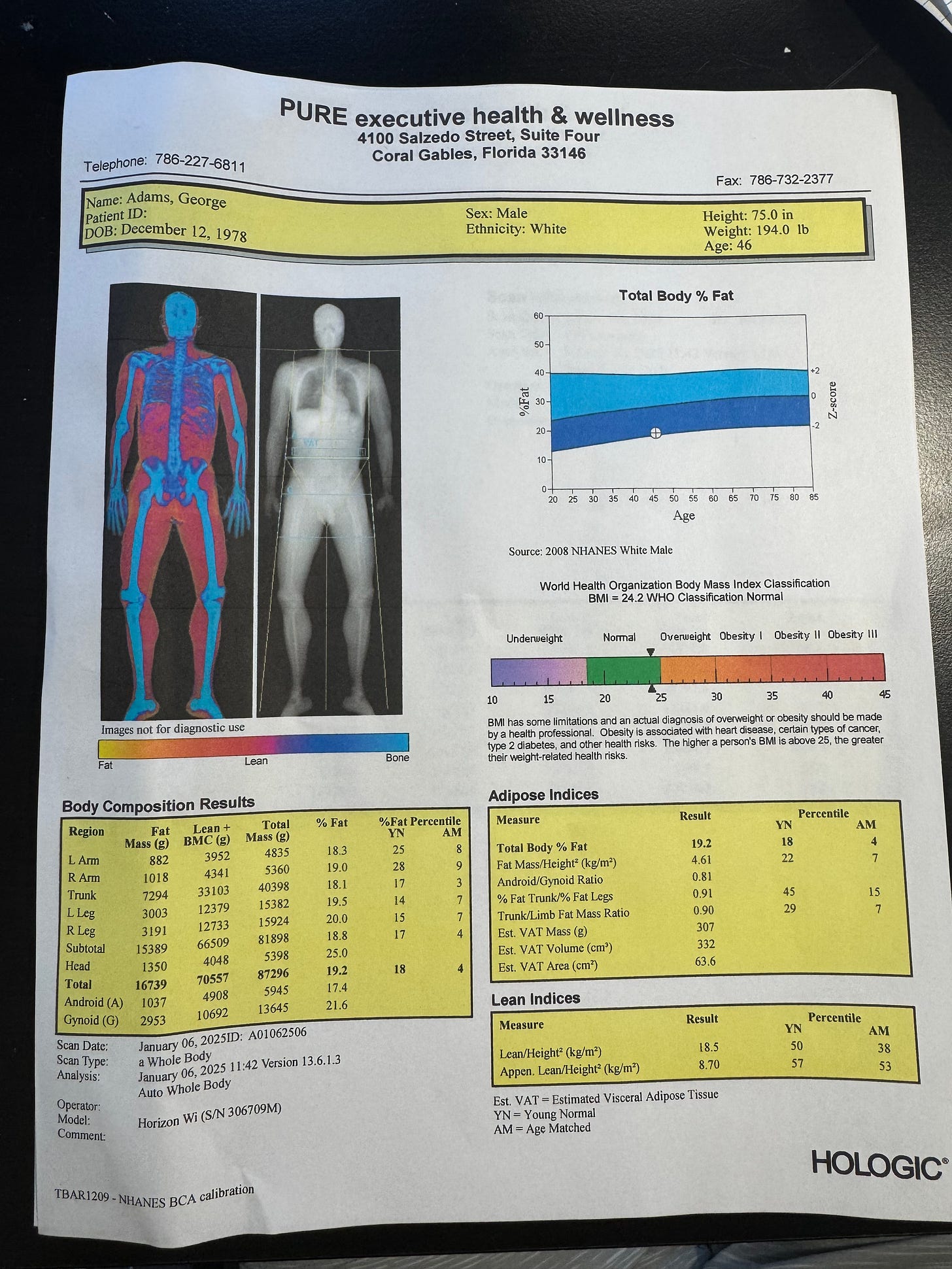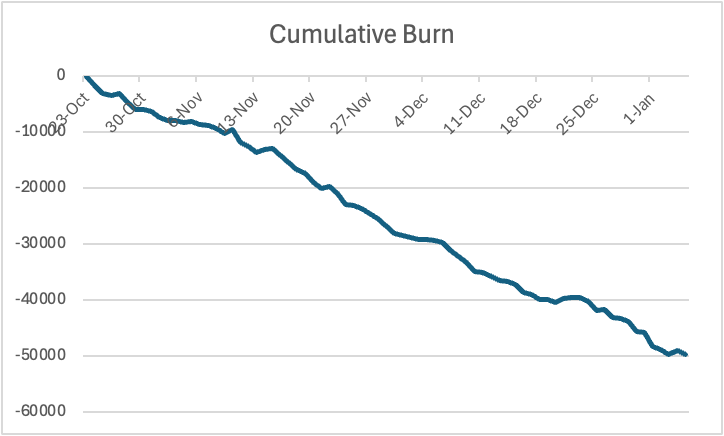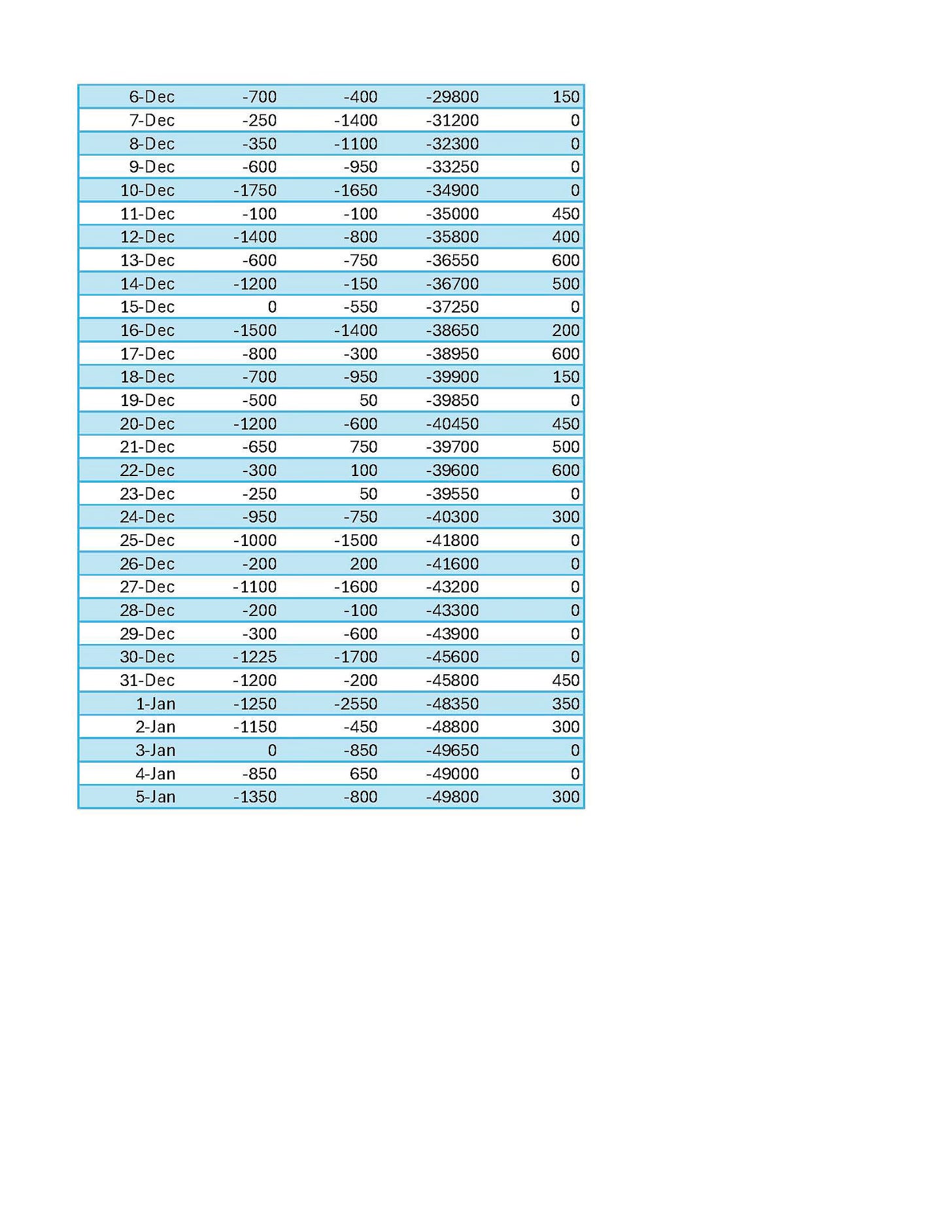A quick aside on the November writing challenge. I got most of the way there on my goal of one post every weekday. I got a bit dispirited towards the end of the month when my last two posts generated -2 subscribers. It seemed like my time was better used elsewhere in the final week of the month. Anyway, I found it interesting that my post on the running challenge with Chris Brewer got the best engagement of any post. So here is the follow-up….
I expected that I might have some injuries, but it’s been out of control. I thought it was Chris that would have issues because he hadn’t been running or working out. I underestimated the impact of old age (I’m 46 and he’s 29). I’ve had, in order, hip issues (extreme tightness on the right side), ankle issues (a flare-up of my right ankle; an issue I’ve managed for ten years after a severe tennis injury), knee (a minor issue after I hit myself with a Christmas tree stand), and toe issues. The toe issue is by far the most serious. I’m worried that I have a bunion on the left big toe that will require surgery at some point. For now, the bunion is a small problem for running and a massive problem for tennis (it flared up after I chased a drop shot in a tennis match).
My strategy has been to focus a bit more on cutting weight than running, simply because my body can’t tolerate a higher running load. That said, I’m in good running shape. I can run 8 minute miles with essentially no stress; I’ve done that pace for seven or eight miles multiple times. I couldn’t do that at the start of training. Recently I ran 5 miles at an 8 minute pace and my ending heart rate was 151; it would have been closer to 170 in Sept.
Let’s talk a bit about body fat. For the past fifteen years or so, I’ve been in amazing cardio shape while carrying a lot of body fat. I generally don’t carry much muscle. I don’t love weight training because, while I put on muscle very quickly, it also makes insatiably hungry. Overall, I put on fat and muscle very quickly with weight training, and I end up wanting to cut that weight at some point for tennis.
This is a DEXA scan taken 1.75 years ago when I was a fairly fit 199 pounds.
23.3%… that’s a lot of fat.
The quickest way to improve that ratio is to weight train and focus on gaining muscle.
I’m not trying to improve my body fat, though. I’m just trying to get faster. And muscle is costly on the track.
Chris has said that he thinks 10 pounds, when cut intelligently, is worth about a minute in a 5k. I’m currently at a ten year low of 192 pounds. I’m done cutting at this point, and plan to stay calorie neutral.
A few people have told me that the lower weight looks worse. It does feel better, though, and it’s probably healthier. I’ve been to Mayo Clinic for the Exec Health check-up four times, and I found it interesting that, on the last visit, my GP mentioned that I could stand to lose to some weight. I found that commen peculiar bc I was not fat at the time (I was maybe 202 pounds). I concluded that the Mayo docs were trained to say that because the health benefits of being thin are so significant; and, furthermore, what Americans think of as thin is not actually thin.
Today I took another DEXA scan.
So 23.3% to 19.2%, with an improvement in visceral fat (81.2cm^2 to 63.6). Nothing crazy, but a nice change in metrics.
This is the chart of my calorie cutting during this challenge:
I’m frankly embarrassed by this level of tracking, but there’s something about my psychology that requires this level of fixation in order to make progress.
A few comments. About ten years ago, my resting metabolic rate was tested twice at 2850/day (no activity). I tested it twice bc no one believed it was that high. My burn with activity is correspondingly high. Now I have reason to believe that it’s fallen to around 2650, so that is the number that I use for calorie cutting (my deficit per day is equal to 2650 + burn from activity - calories consumed). If you do a good VO2 Max test, it will show you calorie burn for each level of heart rate. It turns out that this VO2 Max data translates pretty well to averages, such that if you burned at a rate of 1400 calories per hour when your heart rate was 145 during your (brief) V02 max test, and your rate monitor showed that you averaged a 145 heart rate during a one hour workout, you can reasonably assume that you burned 1400 calories. For me at least, any estimate of calorie burn from activity that does not come from my VO2 Max tests (from a website for example, or from an exercise machine estimate) is way too low, and I also know that the VO2 max data is correct because it squares with data kept many times over months.
You should not cut weight the way I do it. These periods of cutting are payment for extreme excess. You’d do better to avoid the excess.
Once you’ve had the excess and you want to cut, it’s best to cut at a gradual rate of 300-500 calories per day. I don’t have that luxury because of the race date. A race is the ultimate in optimization subject to constraints. I need the cut to improve my time, and it’s worthwhile to risk doing it too quickly given the benefits. It’s also important that I quit the cut well before the race date (now, for example), because you can’t train at 100% during a cut.
I find that, with older age, the discipline to stay with a cut comes easy. I don’t know why that is, but, at younger ages, there would be more stops and starts. By far the worst thing about cutting calories is that one of life’s great pleasures— going out to eat with friends— becomes a good bit less enjoyable.
One very bad element of this cut was the alcohol calories consumed. This probably overstates it by a little (bc I was going by 150 calories for a glass of wine) but you can see that there were a lot of alcohol calories. It’s not good, obviously. It was a very busy holiday season (with big guys’ trip→thanksgiving→Basel→family reunion→Christmas→New Year) but I should have done way better in this regard. I can’t help but think, however, that if these calories were blasts of pure sugar, rather than wine, the effect on the cut would have been much more severe.
I really don’t know where I am in my 5k time. My May 2022 three mile time was 19:45. I just finished three days in a row of hard workouts at the track. This is what they looked like.
Saturday
KEY RUNNING TEST 5K
12.4x400M (rest:40" btw laps)
400m: 1’25"
400m: 1’24"
400m: 1’27"
400m: 1’29"
400m: 1’33"
400m: 1’30"
400m: 1'34"
400m: 1’41"
400m: 1’32"
400m: 1’33"
400m: 1’32"
400m: 1’26"
That’s 40 seconds rest in between fast 400s.
Sunday
essentially the same workout as the Monday workout below…
Monday
6x800M (recovery: jog 3’08 -3’10 400m between 800s)
1- 800m: 3’08"
splits 300m 1’08" 400m:1’34" 700m 2’48"
(rec:2’33)jog
2- 800m: 3’06"
slits: 300m: 1’12" 400m: 1’36" 700m: 2’44"
(rec: 3’00)jog
3- 800m: 3’02"
Splits: 300m: 1’08" 400m:1’32" 700m: 2’41"
(rec: 3’12)jog
4- 800m: 3’07"
Splits: 300m: 1’11" 400m: 1’35" 700m: 2’45"
(rec:2’55")
5- 800m: 3’06"
Splits: 300m: 1’10" 400m: 1’33" 700m: 2’45"
(rec: 2’53")
6- 800m: 3’15
Splits: 300m: 1’12" 400m: 1'37 700m:2’55
The rest of this week, I plan to do only mid intensity treadmill runs (I’ll be traveling). Starting Tuesday next week, I’ll get back on the track and then do five workouts (every other day) at the track before the race date of Jan 27. The workouts will likely look like the above, and might not include an actual 5k. I’ll then take three days off before the race. If anyone knows about optimal protocols, please let me know if this is far off.
If you made it this far in the post, sorry.









Great read, Brandon. I learned something new (Vo2 as a way of estimating cal burns). Very cool - good luck with the injuries!
Thanks Brandon, for the insightful read. What shoes are you planning to wear for the race? Curious if you have considered carbon plated options.